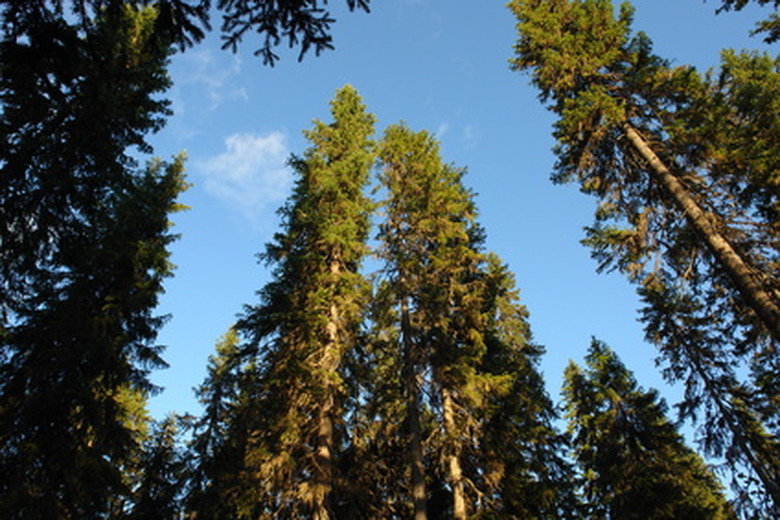Why Are Pine Trees Called Evergreens?
Pine trees are not deciduous trees. The leaves of deciduous trees begin to change color in the fall and eventually fall off the tree. Pine trees are called evergreens because they have green leaves, or needles, all year.
Conifers and Evergreens
Conifers, or cone-bearing trees like the pine, are often called evergreens, but not all conifers stay green all year. Not all evergreens are conifers, either.
What Makes Evergreens Green?
What most people refer to as pine needles are actually the leaves of the pine tree. They contain chlorophyll, which gives them their green color.
- Pine trees are not deciduous trees.
- Conifers, or cone-bearing trees like the pine, are often called evergreens, but not all conifers stay green all year.
Protection from the Cold
Pine needles are covered with a waxy coating that protects them from freezing and dehydration. In deciduous trees, cold weather initiates the fall change of colors that leads to leaf drop.
Life of a Pine Needle
Most pine needles do not fall off the tree after a season of growth. They can remain on the tree and stay green for several years.
Photosynthesis
The chlorophyll in plants and trees absorbs light for the process of photosynthesis, or converting carbon dioxide into oxygen. Pine trees and other evergreens continue to photosynthesize, albeit at a slower rate, during the winter as long as they have enough water.
Pine Trees
They raise their branches to the sky in fields, front yards and other sun-soaked places around the world. They require little water and well-drained, preferably sandy soil. They can live well over 100 years, and some have even been found that are thousands of years old, such as the bristlecone pine that thrives in Nevada's Great Basin National Park. The branches of the pine tree grow laterally from a straight trunk that's covered in bark. Some pine tree species produce just one whorl of distinct branches a year that butts against the tip of the new shoot. The woody plants that become the towering trees that populate cities, forests and national parks across the country are beneficial to the environment as well as commerce. Pine parts are also used for the manufacturing of substances such as pulp and paper, rosin and the cleaning agent turpentine.
- Pine needles are covered with a waxy coating that protects them from freezing and dehydration.
- Pine trees and other evergreens continue to photosynthesize, albeit at a slower rate, during the winter as long as they have enough water.
